According to the "How to handle script errors as a WebBrowser control host" MSKB article, you need to handle CGID_DocHostCommandHandler/OLECMDID_SHOWSCRIPTERROR command in the WebBrowser host.
With a bit of coding, here is how it can be done for the WinForms WebBrowser version, and it actually works:
using System;
using System.Diagnostics;
using System.Runtime.InteropServices;
using System.Windows.Forms;
namespace WindowsFormsApplication1
{
public class WebBrowserEx: WebBrowser
{
class WebBrowserSiteEx : WebBrowserSite, NativeMethods.IOleCommandTarget
{
public WebBrowserSiteEx(WebBrowser browser): base(browser)
{
}
public int QueryStatus(IntPtr pguidCmdGroup, uint cCmds, NativeMethods.OLECMD[] prgCmds, ref NativeMethods.OLECMDTEXT CmdText)
{
return NativeMethods.OLECMDERR_E_UNKNOWNGROUP;
}
public int Exec(IntPtr pguidCmdGroup, uint nCmdId, uint nCmdExecOpt, IntPtr pvaIn, IntPtr pvaOut)
{
if (pguidCmdGroup != IntPtr.Zero)
{
Guid guid = (Guid)Marshal.PtrToStructure(pguidCmdGroup, typeof(Guid));
if (guid == NativeMethods.CGID_DocHostCommandHandler)
{
if (nCmdId == NativeMethods.OLECMDID_SHOWSCRIPTERROR)
{
// if DOM needed: dynamic document = Marshal.GetObjectForNativeVariant(pvaIn);
// continue running scripts
if (pvaOut != IntPtr.Zero)
Marshal.GetNativeVariantForObject(true, pvaOut);
return NativeMethods.S_OK;
}
}
}
return NativeMethods.OLECMDERR_E_UNKNOWNGROUP;
}
}
protected override WebBrowserSiteBase CreateWebBrowserSiteBase()
{
return new WebBrowserSiteEx(this);
}
}
public partial class Form1 : Form
{
WebBrowserEx _browser;
public Form1()
{
InitializeComponent();
_browser = new WebBrowserEx();
_browser.Dock = DockStyle.Fill;
this.Controls.Add(_browser);
}
private void Form1_Load(object sender, EventArgs e)
{
// testing
_browser.DocumentText = "<script>alert(bad.bad)</script>";
}
}
static class NativeMethods
{
[StructLayout(LayoutKind.Sequential)]
public struct OLECMD
{
public uint cmdID;
public uint cmdf;
}
[StructLayout(LayoutKind.Sequential)]
public struct OLECMDTEXT
{
public UInt32 cmdtextf;
public UInt32 cwActual;
public UInt32 cwBuf;
public char rgwz;
}
public const int OLECMDERR_E_UNKNOWNGROUP = unchecked((int)0x80040102);
public const int OLECMDID_SHOWSCRIPTERROR = 40;
public static readonly Guid CGID_DocHostCommandHandler = new Guid("f38bc242-b950-11d1-8918-00c04fc2c836");
public const int S_OK = 0;
[ComImport, Guid("b722bccb-4e68-101b-a2bc-00aa00404770"), InterfaceType(ComInterfaceType.InterfaceIsIUnknown)]
public interface IOleCommandTarget
{
[PreserveSig]
int QueryStatus(
IntPtr pguidCmdGroup,
UInt32 cCmds,
[In, Out, MarshalAs(UnmanagedType.LPArray, SizeParamIndex = 1)] OLECMD[] prgCmds,
ref OLECMDTEXT CmdText);
[PreserveSig]
int Exec(
IntPtr pguidCmdGroup,
uint nCmdId,
uint nCmdExecOpt,
IntPtr pvaIn,
IntPtr pvaOut);
}
}
}
Updated to address the comment:
I need to capture the JavaScript error info in order to log it while
still not displaying it to the user. I looked at the document object
(the commented out line) and didn't see anything there. Is there an
easy way to capture this info?
Check the article I linked at the beginning. There are special properties errorLine, errorCharacter, errorCode, errorMessage, errorUrl available on document.parentWindow.event object.
 (take from this, btw)
(take from this, btw)